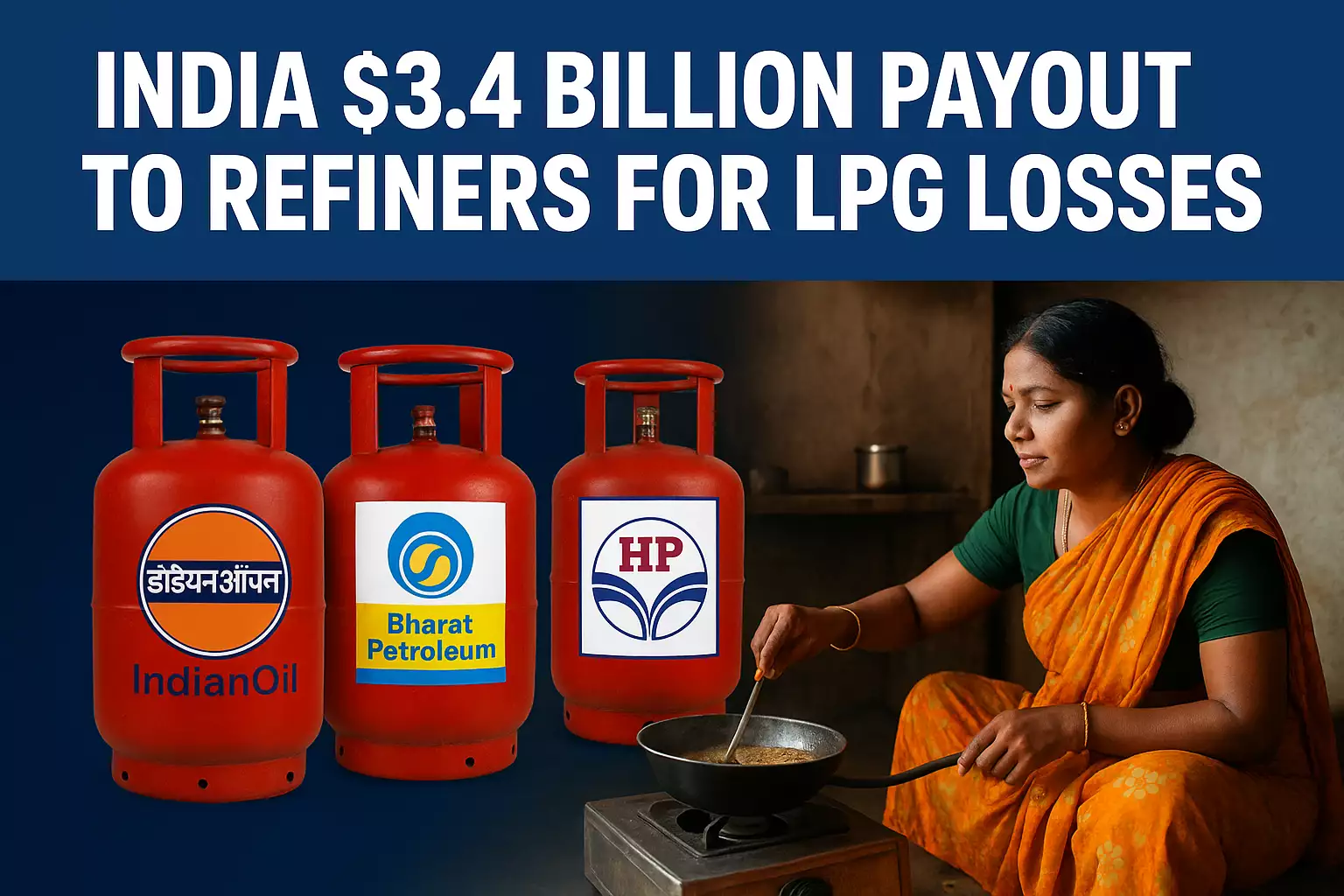Physical Address
304 North Cardinal St.
Dorchester Center, MA 02124
Physical Address
304 North Cardinal St.
Dorchester Center, MA 02124

India $3.4 billion payout to refiners for LPG losses has been approved by the Government of India, marking a significant policy step to ensure affordable cooking gas for millions of households across the country.
In a significant policy move aimed at ensuring affordable cooking gas for millions of households, the Government of India has approved a $3.4 billion (₹30,000 crore) payout to state-run oil marketing companies (OMCs) to compensate for their losses in supplying subsidized Liquefied Petroleum Gas (LPG). This decision, announced on August 8, 2025, is expected to stabilize supply chains, protect the financial health of refiners, and continue the government’s commitment to making clean cooking fuel accessible to low-income households.
Source PIB – Cabinet approves Rs 30,000 crore as compensation to Public Sector Oil Marketing Companies for losses in Domestic LPG
The approved $3.4 billion payout to refiners for LPG losses will primarily benefit three major state-run OMCs:
These companies have been selling LPG cylinders at rates significantly below global market prices, especially under social welfare schemes like the Pradhan Mantri Ujjwala Yojana (PMUY). Over time, this has resulted in mounting financial losses. The payout will act as a financial cushion, helping them recover from under-recoveries and maintain uninterrupted LPG supply across the country.
According to government sources, the ₹30,000 crore package will be released in 12 tranches, ensuring steady cash flow to the OMCs. Alongside this, the cabinet has also cleared an additional ₹12,060 crore ($1.38 billion) to fund subsidized LPG connections for women in nearly 100 million low-income households.
This dual approach addresses two critical challenges:
For everyday consumers, this move is likely to prevent sharp price hikes in LPG cylinders. Global energy markets have been volatile, with fluctuating crude oil prices putting pressure on domestic fuel pricing. By providing this payout, the government ensures that price stability is maintained for households, especially those dependent on government-subsidized cylinders.
Low-income households, particularly women beneficiaries under PMUY, will see the most benefits. Access to affordable LPG reduces dependence on firewood and kerosene, improving health outcomes by cutting indoor air pollution and saving time spent on fuel collection.
The India $3.4 billion payout to refiners for LPG losses isn’t just a fiscal decision — it’s a social investment. Here’s how:
This decision aligns with India’s long-term goal of achieving universal clean cooking access and reducing reliance on polluting fuels. Over the past decade, programs like PMUY have expanded LPG coverage from just over 50% of households to nearly universal access in rural areas.
By providing substantial financial support to OMCs, the government is signaling its intention to sustain subsidies despite fiscal pressures. This is especially important in an election year, where public welfare and affordability remain key voter concerns.
While the payout provides immediate relief, challenges remain:
Addressing these issues will require policy innovation, including better targeting of subsidies, promoting smaller and more affordable LPG cylinder sizes, and encouraging private sector participation in distribution.
The India $3.4 billion payout to refiners for LPG losses marks a decisive step toward protecting both consumers and suppliers in the cooking gas ecosystem. By compensating state-run refiners and funding new LPG connections, the government is reinforcing its commitment to clean energy access, women’s welfare, and public health improvement.
For millions of households, especially those in rural and low-income segments, this decision is more than just an economic policy — it’s a promise of a healthier, more dignified way of life.